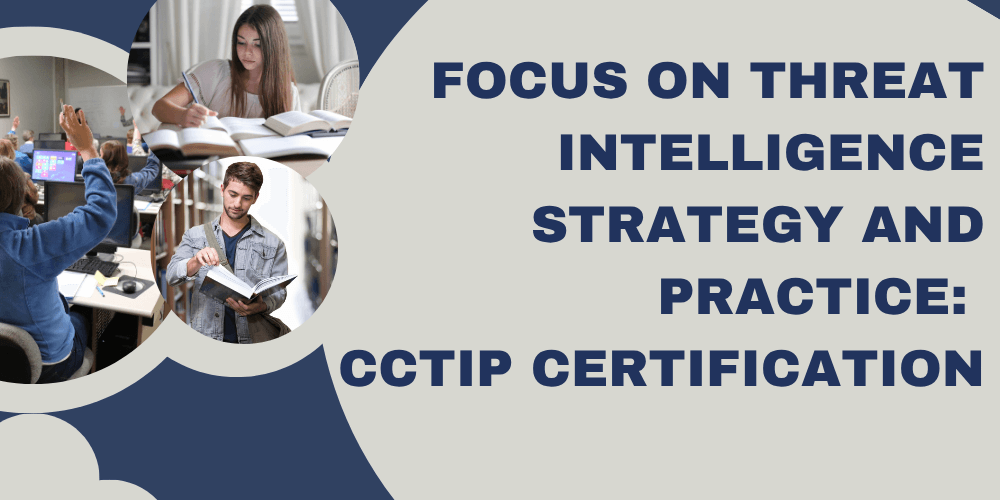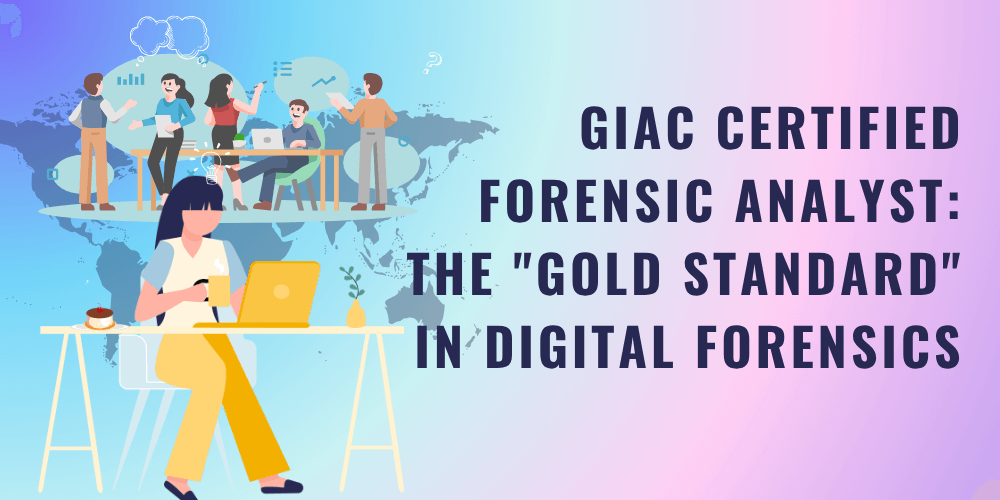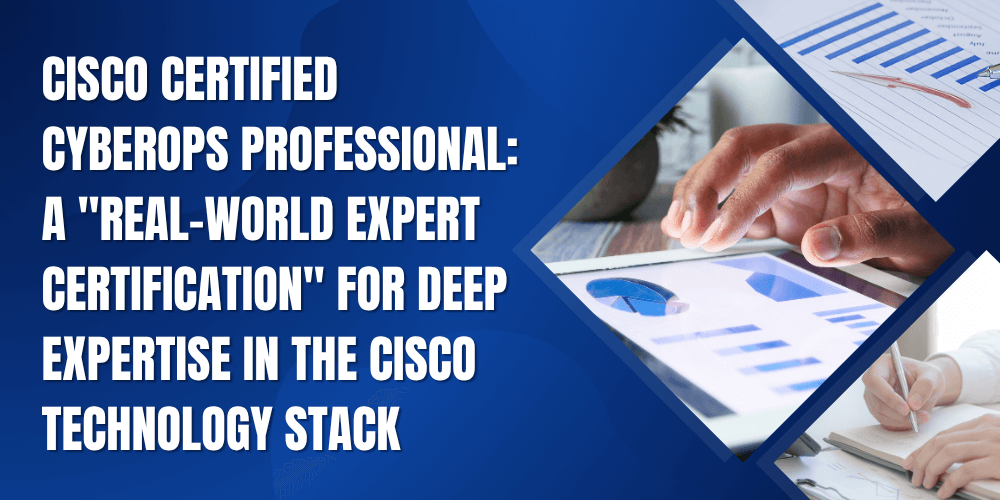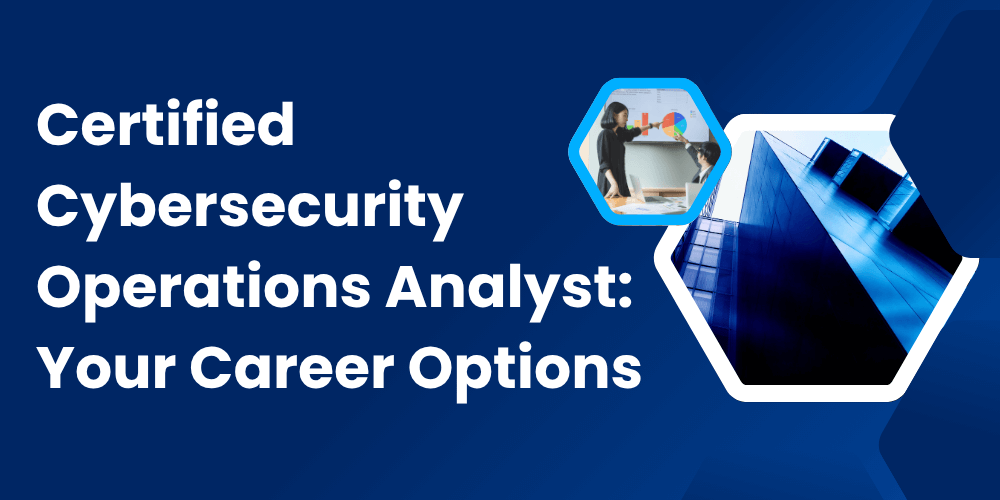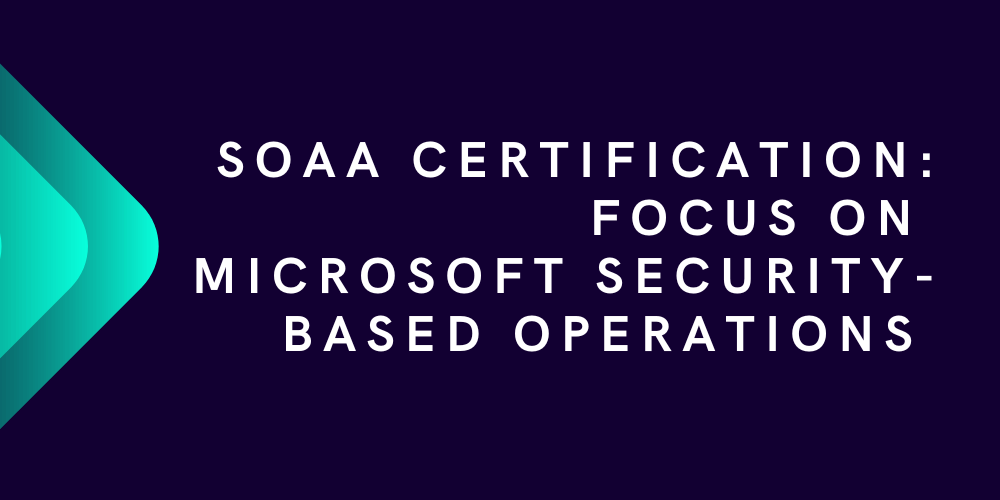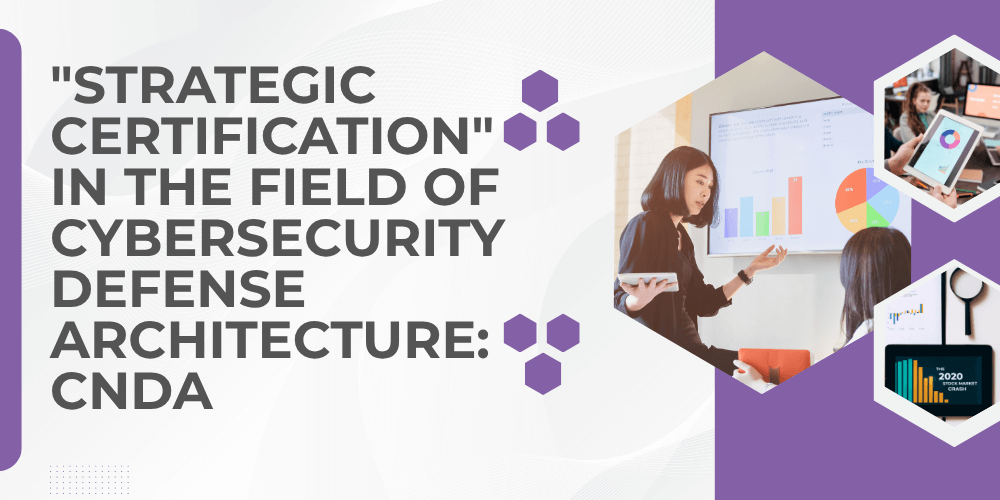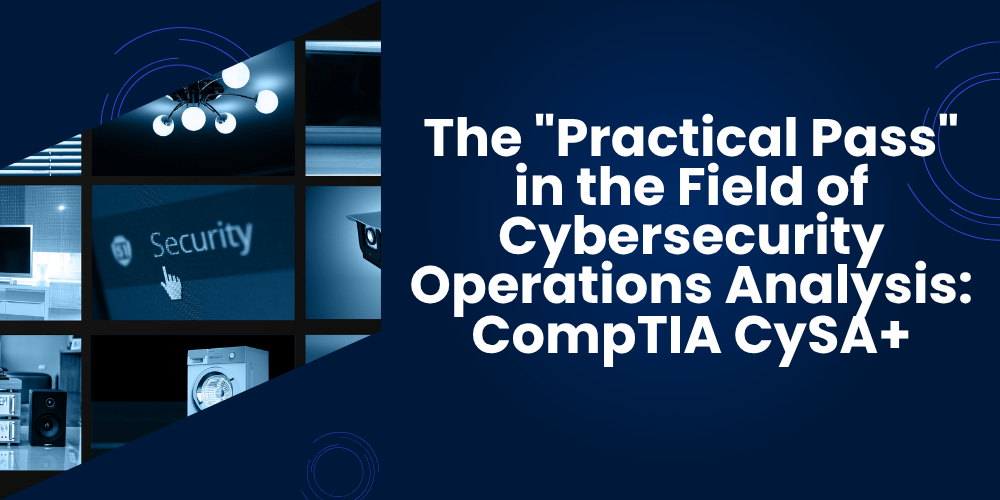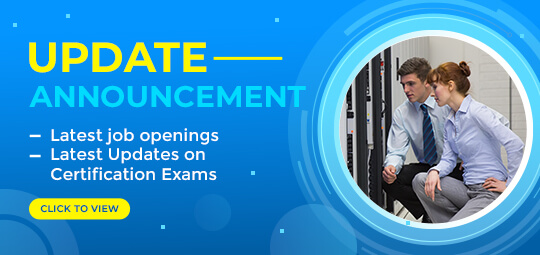TRUSTED BY THE SMARTEST TEAMS IN THE WORLD FOR CERTIFIED CANDIDATES
SPOTO Blogs
Useful learning materials to become certified IT personnel
-
- 532
- SPOTO 2
- 2025-08-12 11:33
-
- 1799
- SPOTO 2
- 2025-08-11 15:59
-
- 634
- SPOTO 2
- 2025-08-11 15:54
-
- 572
- SPOTO
- 2025-08-11 15:19
-
- 553
- SPOTO
- 2025-08-08 15:46
-
- 520
- SPOTO 2
- 2025-08-08 14:51
-
- 512
- SPOTO 2
- 2025-08-08 14:43
-
- 523
- SPOTO 2
- 2025-08-07 14:36
-
- 572
- SPOTO 2
- 2025-08-07 14:32
TRUSTED BY THE SMARTEST TEAMS IN THE WORLD FOR CERTIFIED CANDIDATES
SPOTO Blogs
Useful learning materials to become certified IT personnel
-
- 532
- SPOTO 2
- 2025-08-12 11:33
Table of Contents1. Introduction to the Certified Cyber Threat Intelligence Professional certification2. Why Earn Your Certified Cyber Threat Intelligence Professional Certification?3. Overview of the CCTIP Certification?4. Prerequisites for the Certified Cyber Threat Intelligence Professional Certification5. Comparable Certifications to CCTIP certification By this article you will learn what CCTIP is and why CCTIP is an advanced certification in the field of threat intelligence that emphasizes both strategy and practice. 1. Introduction to the Certified Cyber Threat Intelligence Professional certification The Certified Cyber Threat Intelligence Professional (CCTIP) is an advanced threat intelligence certification offered by the Cyber Threat Intelligence Alliance (CTIA), which focuses on strategic planning, practical analysis, and operational application of enterprise-level threat intelligence. It verifies the holder's comprehensive capabilities, from intelligence collection to defensive decision-making. It is a leading qualification in the threat intelligence field, emphasizing the integration of strategy and practice. Amid the increasing sophistication of cyber threats, enterprises require not only fragmented threat data but also an intelligence-driven defense system that supports decision-making. CCTIP's core objective is to cultivate "threat intelligence strategic decision-makers and operational implementers." CCTIP requires not only proficiency in intelligence analysis techniques but also the ability to plan intelligence systems from a business perspective, transforming intelligence into actionable defense strategies. CCTIP also demonstrates the ability to manage intelligence teams and facilitate cross-departmental collaboration. It serves as a key certification that connects threat intelligence technology with enterprise security strategy. 2. Why Earn Your Certified Cyber Threat Intelligence Professional Certification? As a high-level certification offered by CTIA, CCTIP is a strategic endorsement in the threat intelligence field. Recognized by security-conscious industries such as finance, energy, and government, it serves as a core screening criterion for companies recruiting threat intelligence leaders and security strategists, demonstrating a comprehensive combination of technical, strategic, and management capabilities. Unlike entry-level certifications that focus on technology, CCTIP emphasizes the business application and strategic value of intelligence. CCTIP holders can directly address the pain point of "intelligence being unused" within enterprises. In other words, CCTIP certification demonstrates both practical and strategic competence. High-level professional competitiveness: According to industry research, the average annual salary for CCTIP holders worldwide is approximately $140,000. Threat intelligence manager positions earn significantly higher salaries than general security positions, and CCTIP is a crucial qualification for advancement to senior management positions such as CISO. Certificate holders can join the CTIA community to access the latest threat intelligence trends, industry cases, and network resources, continuously enhancing their professional influence. 3. Overview of the CCTIP Certification? The CCTIP assessment covers the entire threat intelligence lifecycle, integrating strategic planning and practical analysis. Practitioners are required to design a threat intelligence architecture tailored to the company's scale and business characteristics, clarify intelligence team roles, processes, and technology stacks, and thoroughly understand the attack tactics matrix, translating these into internal intelligence operational standards. Establishing intelligence effectiveness evaluation metrics to demonstrate the return on investment (ROI) to management is also crucial. CCTIP holders must communicate with business departments to clarify intelligence requirements, prioritize them based on business impact, and collect and verify data from multiple sources, including public sources, commercial intelligence, and internal sources. For external attacks, practitioners must analyze attacker TTPs, link them to the MITRE ATT&CK matrix to identify attack phases, assess the long-term impact of threats on the company, predict attack trends, and trace attack organizations based on attack method signatures. Finally, they must customize the intelligence output format to the target audience to ensure effective application. As an advanced certification in the threat intelligence field, CCTIP emphasizes practical application and defense integration. Practitioners must leverage threat intelligence to prioritize vulnerability remediation and optimize security operations, integrating intelligence into SOC processes to improve threat detection efficiency. During security incidents, practitioners also need to leverage intelligence to quickly locate the attack source and predict the attack path to shorten response times. In addition, CCTIP practitioners must engage in team building and skills development, develop training plans for intelligence teams, establish analyst competency models, promote the implementation of intelligence across IT, business, and legal departments, and foster cross-departmental collaboration to break down intelligence silos, ensure that intelligence collection and use comply with data privacy regulations, and mitigate legal risks arising from improper intelligence sourcing. 4. Prerequisites for the Certified Cyber Threat Intelligence Professional Certification (1) Experience Preparation CTIA officially recommends that practitioners must have more than 3 years of cybersecurity experience, including at least 1 year of experience in threat intelligence or security analysis. It is recommended to hold a basic security certification or a threat intelligence entry certification. They must complete approximately 40 hours of official training courses from CCTIP, covering strategic planning and practical cases. (2) Examination format The CCTIP examination lasts a total of 4 hours and includes multiple-choice questions, case analysis questions, and practical operation questions. The full score is 100 points, and a score of ≥75% is considered a pass. (3) Maintaining certification The CCTIP certificate is valid for 2 years. Certification must be maintained by accumulating 40 continuing education credits every 2 years by participating in advanced intelligence training, publishing technical articles, and participating in intelligence practical projects. 5. Comparable Certifications to CCTIP certification GIAC Cyber Threat Intelligence (GCTI) Certified Threat Intelligence Analyst (CTIA) Certified Information Systems Security Professional (CISSP) Threat Intelligence Certification (TIC) -
- 1799
- SPOTO 2
- 2025-08-11 15:59
Table of Contents1. Introduction to the GIAC Certified Forensic Analyst certification?2. Career Value of Holding the GIAC Certified Forensic Analyst Certification3. Overview of the GCFA Certification?4. Prerequisites for the GIAC Certified Forensic Analyst Certification5. Comparable Certifications to GIAC Certified Forensic Analyst Reading this article, you will learn that GCFA is trying to cultivate experts who can legally and efficiently extract digital evidence and restore the truth of the incident. 1. Introduction to the GIAC Certified Forensic Analyst certification? The SANS GIAC Certified Forensic Analyst (GCFA) is an advanced digital forensics certification offered by GIAC, a subsidiary of the SANS Institute, a leading global cybersecurity research organization. It focuses on practical, end-to-end computer and network forensic investigation capabilities, verifying the holder's ability to collect, analyze, and preserve digital evidence, reconstruct the truth behind an attack, and provide reliable evidence for legal proceedings or internal investigations. It represents a highly technical and authoritative qualification in the fields of digital forensics and incident response. Amid the increasing prevalence of cyberattacks, data breaches, and other security incidents, digital forensics is crucial for tracing the source of an attack, determining responsibility, and securing evidence. The GCFA's core objective is to cultivate "scientific investigators of digital evidence." It requires not only proficiency in forensic tools but also the ability to adhere to rigorous forensic processes, extract hidden evidence from complex digital environments, reconstruct the timeline of events, and present findings in a manner that complies with legal standards. Combining forensic technology with legal norms and practical analysis, the GCFA is a core certification that bridges technical investigation and legal proof. 2. Career Value of Holding the GIAC Certified Forensic Analyst Certification Known for its technical depth and practical approach, the GCFA is a globally recognized "expert-level certification" in digital forensics. It stands as an authoritative endorsement in the field and is widely recognized by financial institutions, technology companies, and government agencies. It is a core screening criterion for recruiting senior forensic analysts. The GCFA certification requires holders to master the skills to extract hidden evidence from complex systems. It directly demonstrates a practitioner's practical proficiency, effectively countering counter-forensic tactics used in real-world attacks and directly improving the efficiency and accuracy of an organization's incident response. Currently, digital forensics talent is in short supply, and GCFA holders earn significantly higher salaries than typical security positions. According to a SANS survey, the average annual salary for GCFA holders worldwide is approximately $130,000. GCFA certification is a key qualification for advancement to senior response specialists and forensics team leaders, and possessing the GCFA certification can help practitioners differentiate themselves in their careers. Certificates can join the SANS and GIAC communities to access the latest forensic technology, tool updates, and threat intelligence, keeping up with cutting-edge trends in digital forensics to better support forensic analysis. 3. Overview of the GCFA Certification? The GCFA assessment focuses on the "practical forensic process," integrating technical details with legal compliance, covering the fundamentals of digital forensics and the legal framework. Practitioners must first master the standard forensic investigation process and understand the importance of the "chain of custody," ensuring that every step of evidence, from collection to presentation, is traceable and untampered with. Secondly, practitioners must be familiar with laws and regulations related to digital evidence to ensure the legality of the investigation process. They must also understand the principles of mainstream forensic tools, thoroughly analyze file system structures, recover deleted files, identify signs of file tampering, extract user activity records and system configuration changes from the Windows registry, analyze system log history, and restore user operation traces. They must also use tools to analyze memory images, extract active processes, network connections, and encryption keys, and identify memory-resident malware. In addition, practitioners must also perform network traffic forensics, analyzing PCAP packet files to identify anomalous communications, extract email records, and reconstruct network behavior. After an attack occurs, practitioners need to collect evidence to trace the malware and the attack source, identify traces of the malware in the system, extract IOCs for threat intelligence correlation, reconstruct the attack steps through cross-analysis of system logs, network traffic, and memory data, determine the attack entry point and impact range, identify the attacker's counter-forensic methods, and master methods to recover log fragments that haven't been completely deleted and analyze temporary data in memory. Finally, practitioners need to document the evidence, recording the investigation process in a standardized format to ensure objectivity and reproducibility in the report. The report should clearly present the investigation conclusions, explain technical details to management or the legal team in non-technical language, understand the requirements for court testimony, and prepare for cross-examination to ensure the admissibility of evidence in legal proceedings. 4. Prerequisites for the GIAC Certified Forensic Analyst Certification (1) Education and experience There are no official educational requirements, but practitioners are strongly recommended to have 1-2 years of digital forensics or incident response experience, familiarity with Windows/Linux operating system principles, and network protocols (TCP/IP). Participation in SANS's "FOR500: Windows Forensic Analysis" training is recommended, but not mandatory. (2) Taking the exam The GCFA exam lasts 4 hours and consists of approximately 115 single-choice, multiple-choice, and scenario-based questions. The full score is 100 points, and a score of 70% or higher is considered a pass. (3) Maintaining certification The GCFA certificate is valid for 4 years, and 36 continuing professional education credits must be accumulated every 4 years, such as participating in SANS forensics training, publishing technical articles, and participating in practical exercises to maintain certification. 5. Comparable Certifications to GIAC Certified Forensic Analyst GIAC Certified Forensic Examiner (GCFE) EnCase Certified Examiner (EnCE) (ISC)² Certified Cyber Forensics Professional (CCFP) SANS GIAC Network Forensic Analyst (GNFA) Certified Forensic Computer Examiner (CFCE) -
- 634
- SPOTO 2
- 2025-08-11 15:54
Table of Contents1. Do you know what the Cisco Certified CyberOps Professional certification is?2. Career Advantages of Holding the Cisco Certified CyberOps Professional Certification3. Overview of the Cisco Certified CyberOps Professional Certification4. Requirements for the Cisco Certified CyberOps Professional certification5. Comparable Certifications to Cisco Certified CyberOps Professional Through this article you will learn that Cisco Certified CyberOps Professional is a "real-world expert certification" for deep expertise in the Cisco technology stack. 1. Do you know what the Cisco Certified CyberOps Professional certification is? Cisco Certified CyberOps Professional is an advanced cybersecurity operations certification offered by Cisco. It focuses on threat detection, incident response, security monitoring, and compliance management within the Cisco security ecosystem. It verifies the holder's practical ability to use Cisco security products to address complex cyber threats. It is a core qualification for mid- to senior-level security operations practitioners within the Cisco security technology ecosystem. Against the increasing complexity of enterprise networks and the continuous evolution of attack methods, the core of the Cisco CyberOps Professional certification is to cultivate "security operations experts within the Cisco ecosystem." The Cisco Certified CyberOps Professional certification requires not only proficiency in the advanced configuration and integration of Cisco security devices, but also the ability to implement a closed-loop "monitor-detect-analyze-respond" operation using the Cisco toolchain, accurately identifying cyberattacks such as APTs, ransomware, and identity theft, and rapidly implementing remedial measures. 2. Career Advantages of Holding the Cisco Certified CyberOps Professional Certification The Cisco Certified CyberOps Professional, a Cisco advanced security certification, directly verifies a holder's in-depth understanding of Cisco security products. Highly recognized in industries such as finance, telecommunications, and government, which heavily utilize Cisco equipment, it serves as a core screening criterion for companies recruiting "Cisco Security Operations Experts" and serves as authoritative validation of the Cisco ecosystem. The certification emphasizes device configuration and scenario implementation. For example, practitioners are required to perform attack source tracing and strive to implement automated response. This allows holders to directly solve real-world problems, improve security operations efficiency, and demonstrate practical operational proficiency. Compared to general security certifications, this certification is irreplaceable within Cisco user companies, creating differentiated professional competitiveness. Salaries are significantly higher than those for basic security positions, and it is a key qualification for advancement to Cisco Security Architects and SOC Leaders. Certificate holders gain access to the Cisco Security Community, receiving the latest product updates, threat intelligence, and technical support. They stay up-to-date on the latest developments in the Cisco security ecosystem and gain access to potential resources and connections within the industry. 3. Overview of the Cisco Certified CyberOps Professional Certification The Cisco Certified CyberOps Professional certification assesses the full-process operation of Cisco security products, integrating technical configuration and practical analysis. Its core exam modules include SCOR 350-201 and one optional exam. Practitioners must first master the advanced configuration and integration of Cisco security devices, including Next-Generation Firewall (NGFW) operations, in-depth configuration of advanced Cisco Firepower NGFW features, and integration with other devices. Security practitioners must analyze network visibility and traffic flows, using Cisco Stealthwatch for advanced traffic monitoring to identify anomalous behavior, and using NetFlow data to analyze network baselines and locate suspicious connections that deviate from normal patterns. They must configure Cisco ISE for granular access control and dynamic authorization based on device health. Linking with Active Directory for single sign-on (SSO) and multi-factor authentication (MFA) is also part of the job of Cisco cybersecurity practitioners, as is preventing identity theft and privilege abuse. Next, they must collect and analyze log data from firewalls, IPS, endpoints, and cloud resources. After the incident is resolved, security personnel must use Cisco tools to collect attack evidence, determine the source and scope of the attack, and generate compliance incident reports to meet industry regulations for incident tracing. Finally, security personnel must implement compliance monitoring and reporting for their workflows. They must configure Cisco devices to monitor compliance metrics to determine whether firewall rules adhere to the principle of least privilege. Based on actual results, they must generate compliance reports to demonstrate the effectiveness of security operations to management and auditors. 4. Requirements for the Cisco Certified CyberOps Professional certification (1) Experience requirements Cisco officially recommends having Cisco Certified CyberOps Associate (CCNA Cyber Ops) certification or equivalent knowledge and being familiar with Cisco security fundamentals and network technology; 2-3 years of experience in Cisco security equipment operation and understanding of TCP/IP protocols, common attack types, and the basic principles of security tools are recommended. (2) Taking the exam Cisco Certified CyberOps Professionals must pass 350-201 Implementing and Operating Cisco Security Core Technologies (SCOR) and one elective exam. Elective exams can be chosen from four options, focusing on specific areas, such as 300-730 SVPN (Remote Access VPN), 300-715 SISE (Identity Services Engine), etc. Practitioners can choose according to their career direction. Each exam lasts approximately 120-180 minutes, and the question types include single-choice questions, multiple-choice questions, drag-and-drop questions, and scenario analysis questions. The certificate is valid for 3 years and must be maintained every 3 years by passing a higher-level Cisco certification or completing designated training. 5. Comparable Certifications to Cisco Certified CyberOps Professional Microsoft Certified: Cybersecurity Architect Expert (SC-100) Palo Alto Networks Certified Security Engineer (PCNSE) GIAC Certified Intrusion Analyst (GCIA) Splunk Core Certified Security Administrator -
- 572
- SPOTO
- 2025-08-11 15:19
Table of Contents1. The Value of PMI-ACP Certification2. Salary that can be obtained with PMI-ACP certification3.The Difference Between ACP and PMP4. Challenges of the PMI-ACP Application5. SPOTO's PMI-ACP Application Support The Agile Certified Practitioner (PMI-ACP) certification demonstrates your mastery of agile principles and sophisticated application of agile techniques. It will enhance your professional profile, showcasing your expertise in cutting-edge project management. Earning the PMI-ACP certification will help you stand out in the job market. Demand for agile expertise is growing as industries recognize the value of flexible project management methodologies in effectively managing complex project environments. In today's fast-paced business environment, Agile project management has become the benchmark. The Project Management Institute Agile Certified Practitioner (PMI-ACP) certification recognizes professionals' skills in Agile methodologies, demonstrating competence and a commitment to continuous learning. 1. The Value of PMI-ACP Certification For businesses, this allows them to adapt to changing business needs, empowering them to exert greater influence over the addition, change, or elimination of requirements. Providing continuous customer feedback improves communication between the business and customers, guiding the direction of projects throughout the development process, achieving predictable returns on investment earlier, and increasing visibility and impact on project progress. Incremental delivery replaces a one-time delivery model at the end of a project, reducing product and process waste. For individuals, earning a certificate validates a practitioner's knowledge and skills in agile principles, practices, tools, and techniques. This certificate covers multiple agile methodologies, rather than simply limiting practitioners to a single agile strategy, helping to enhance professional project management capabilities. Earning a certificate is more valuable than entry-level certifications based solely on exams or training. 2. Salary that can be obtained with PMI-ACP certification According to a study by payscale.com, individuals holding the PMI-Agile Certified Practitioner (PMI-ACP)® certification earn an average PMI-ACP® salary of $108,000. PMI-ACP® salaries vary widely, depending on the specific role held by the certified Agile practitioner. Here are the average salaries by position: Information Technology (IT) Director - $147,395 Senior Project Manager, Software Applications - $146,092 Senior Project Manager (IT) - $137,337 Software Engineering Manager - $132,145 Technical Project Manager (TPM) - $125,126 Senior Product Manager - $124,800 Project Manager (IT) - $122,964 Case Study1 : Leveraging PMI Certification to Land Your Dream Job and Salary Increase. A 36-year-old online user, going by the handle Wrong-Fish, shared his certification experience: "I'm so glad I earned my PMI certification. While it didn't result in a raise at my current employer, I was offered a competitive salary and a "Senior Project Manager" position, so getting the PMP certification was a smart move to demonstrate my project management experience." I worked in civil engineering and later changed jobs, and the PMI really helped me stand out—most job advertisements I saw listed the PMI as a benefit, not a requirement. In summary, since the PMI is a widely recognized certification across multiple industries (IT, engineering, construction, etc.), I encourage anyone who might benefit from it to pursue it. If you decide to change jobs, the PMP certification could be a valuable asset, helping you stand out and secure a higher salary. 3.The Difference Between ACP and PMP The PMP is a project management (forecasting) methodology, emphasizing a plan-driven approach. It teaches us the workflow and mindset for accomplishing one task at a time in a complex and ever-changing environment. It adheres to pre-planned plans and processes, ensuring clear requirements and minimizing change. If you want to improve your execution and planning skills, the PMP is your best choice, regardless of your role. The ACP is an agile project management (agile method) methodology, emphasizing a value-driven approach. It teaches us how to deliver valuable, high-quality products despite changing or uncertain requirements and short release cycles, focusing on value and results. If you want to deliver projects or products in an innovative, exploratory, and dynamic environment, the ACP is your best choice, regardless of your role. 4. Challenges of the PMI-ACP Application While the PMI-ACP (Agile Certified Practitioner) application process is standardized, several key challenges remain for aspiring candidates: Understanding the eligibility requirements: PMI-ACP standards cover educational background, general project management experience, and specific Agile project experience. First-time applicants may struggle to accurately understand and demonstrate how they meet these requirements. Preparing documents: Applicants must provide detailed documentation demonstrating their project management and Agile experience, including project descriptions, roles, and work hours. Ensuring this documentation is complete and meets PMI's review criteria can be time-consuming. Verifying education and training: The 21-hour Agile management learning requirement requires completion of relevant courses from a PMI-authorized provider, adding another step to the applicant's preparation process. Navigating the review process: Submitted materials are reviewed on the PMI website, and there is a 10% chance that an additional audit will be conducted, requiring the applicant to provide further detailed documentation. Managing exam fee payment: Applicants must pay the exam fee within the specified timeframe and be familiar with the accepted payment methods and procedures. By understanding these potential challenges and taking proactive steps to address them, aspiring PMI-ACP professionals can confidently complete the application process and increase their chances of successfully achieving certification. Case Study2 : How Emily Passed the PMI-CAPM Exam and Launched a Side Business Emily, a 32-year-old marketing professional, had always been interested in project management but lacked formal training. She wanted to enhance her skills and qualifications to not only advance her primary career but also explore side hustles to earn extra income. After researching various certifications, Emily decided to pursue the PMI Certified Associate in Project Management (CAPM) because it perfectly aligned with her goal of building a solid foundation in project management principles. Exam Preparation: Emily developed a rigorous study plan, dedicating two hours each day after get off work. She used the official PMBOK Guide as her primary study resource, supplemented by online video courses and practice exams. She also joined a CAPM study group on a professional networking platform, where she exchanged experiences with fellow students and explored challenging concepts. To ensure smooth exam preparation, Emily took several timed, full-length practice exams, which helped her improve her time management skills and identify weaknesses. After three months of dedicated preparation, Emily took the CAPM exam and passed it on her first try. This certification not only boosted her confidence but also provided her with a formal qualification recognized by employers worldwide. Equipped with her new certification and project management knowledge, Emily began offering freelance project coordination and support services on platforms like Upwork and Fiverr. Her initial projects included helping startups with project planning, risk assessment, and timeline management. With her high-quality work and positive reviews, Emily's freelance business steadily grew, providing a valuable supplemental income stream alongside her full-time job. Key Takeaways: Continuous, focused learning and utilizing a variety of resources are crucial. For example, joining a study group and taking practice exams can boost confidence and improve exam scores. The CAPM certification not only validated her knowledge but also opened doors to practical side hustles and career advancement. 5. SPOTO's PMI-ACP Application Support Facing the challenges of the PMI-ACP (Agile Certified Practitioner) application process, SPOTO offers professional services designed to help candidates navigate every step effortlessly and accurately. Our comprehensive support includes: Prequalification Assessment: Our dedicated consultants will work with you one-on-one to ensure you meet all PMI-ACP eligibility requirements and provide a personalized application strategy. Document Preparation and Review: SPOTO will assist you in preparing and reviewing all necessary application materials, including proof of project experience and Agile management training, to ensure completeness and compliance. Registration Process Management: Our team will handle the entire registration process on your behalf, including online submission, document upload, and fee payment, eliminating complexities. Document Review Guidance: If PMI conducts an additional document review, SPOTO will provide professional guidance and support to help you prepare the required supplemental documents. Comprehensive Exam Preparation: In addition to application services, we offer exam preparation resources such as practice exams and review materials to improve your chances of passing the PMI-ACP exam. Certification Maintenance Consulting: Even after you earn your certification, our consultants will continue to provide you with advice and help you accumulate the required Professional Development Units (PDUs) to maintain your PMI-ACP credential. Dedicated Customer Support: SPOTO's 24/7 customer service ensures your questions are promptly addressed throughout the application and certification process. With SPOTO's PMI-ACP certification services, you can focus on exam preparation while our dedicated team handles the complex application process. Let us guide you on your path to becoming a successful Agile Project Management expert. -
- 553
- SPOTO
- 2025-08-08 15:46
Table of Contents1. What are Azure Certifications?2. AWS and Azure Certifications: Overview3. Which certification is most popular?4. AWS vs. Azure: Which is the right fit for you in 2025?5. What side jobs can you pursue with this certification? As businesses of all sizes migrate to the cloud, demand for cloud skills continues to surge. According to Gartner, global cloud spending is expected to reach $723 billion by 2025, with AWS and Azure leading the market. Entry-level cloud certifications not only enhance your technical skills but also strengthen your resume, giving you an edge in the job market. 1. What are Azure Certifications? Microsoft Azure Certifications are a series of professional qualifications officially offered by Microsoft that validate IT professionals' technical proficiency and practical experience on the Azure cloud platform. By earning an Azure Certification, holders demonstrate mastery of core cloud computing concepts, Azure service configuration and management, and expertise in cloud application development, cloud security, data analytics, and artificial intelligence. 2. AWS and Azure Certifications: Overview For beginners, the two most popular certification options are the AWS Certified Cloud Practitioner (CLF-C02) and Microsoft Azure Fundamentals (AZ-900). Both are designed to validate foundational cloud knowledge, but they cater to slightly different audiences and career goals. The AWS Certified Cloud Practitioner is an entry-level certification that covers AWS core services, security, and pricing. This certification is ideal for beginners seeking to understand AWS services and the fundamentals of the cloud. It is also popular among those pursuing roles such as Cloud Support Associate or AWS Sales. Azure Fundamentals is for those new to Azure or cloud computing. It covers Azure's core concepts, services, and pricing models. This certification is best suited for beginners planning to use Microsoft technologies or for enterprises heavily relying on Azure. The certification exam typically combines theoretical knowledge testing with practical exercises, helping learners comprehensively hone their skills in designing, deploying, managing, and optimizing cloud platforms. With the increasing importance of cloud computing in enterprise digital transformation, Azure certifications have become highly recognized professional qualifications within the industry, helping holders improve their career competitiveness and salary levels. 3. Which certification is most popular? AWS remains the most widely used cloud platform, holding approximately 32% of the market share by early 2025. Startups and technology companies particularly value AWS skills due to its scalability and broad service offerings. AWS Cloud Practitioner: Primarily multiple-choice questions, this is straightforward if you've already learned AWS fundamentals. Azure is gaining popularity, especially among large enterprises and government agencies, where it holds approximately 25% of the market share. Organizations already using Microsoft products generally prefer professionals with Azure certifications. Azure Fundamentals: A mix of multiple-choice, drag-and-drop, and scenario-based questions. The variety is slightly greater, but masterable with practice. 4. AWS vs. Azure: Which is the right fit for you in 2025? Choosing between AWS and Azure certifications largely depends on your career goals and the job market in your region. When to choose AWS: You're aiming to work at a tech startup or a company that has invested heavily in AWS. You prefer a certification that's widely recognized across industries. And you plan to pursue AWS certifications, such as the AWS Solutions Architect - Associate (SAA-C02). When to choose Azure: Your target employer is an enterprise within the Microsoft ecosystem. You'd prefer to specialize in Azure's cloud and data services. And you plan to be promoted to Azure Administrator Assistant (AZ-104). 5. What side jobs can you pursue with this certification? Azure Certification: Cloud Platform Consulting and Advisory Services (provides consulting services such as cloud architecture design, migration solutions, security strategies, and cost optimization to small and medium-sized enterprises and individual customers). Cloud Platform Operations and Management Outsourcer (provides daily operations, monitoring, troubleshooting, and automation script development for enterprises, either remotely or on-site). Cloud Solutions Developer (develops customized cloud applications, automation tools, data analytics, or AI services to help customers achieve digital transformation). Online Course and Technical Trainer (produces Azure-related instructional videos, live courses, or hosts in-person training sessions, sharing practical experience and exam preparation tips). Freelance Cloud Engineer (takes on short-term Azure training through freelancing platforms such as Upwork and Freelancer). (Related projects, flexible schedules available.) Generally speaking, entry-level Azure-related side jobs, such as basic cloud environment configuration, simple scripting, or operations support, earn between 100 and 300 RMB per hour. Intermediate-level cloud architecture design, automated solution development, or security hardening projects can earn between 5,000 and 15,000 RMB per month. Senior cloud consultants or custom cloud application developers, especially those providing enterprise-wide migration or optimization solutions, can easily earn tens of thousands of RMB per project, or even over 100,000 RMB. Case Study: Effective Side Hustles for Azure Certified Certified Individuals George, an IT engineer with five years of cloud computing experience, recently earned the Microsoft Azure Administrator Associate (AZ-104) certification. To further enhance his professional competitiveness, he decided to leverage his Azure certification skills to develop a side business and supplement his income. George spends 1.5 hours every evening learning new cloud platform technologies and takes on private work on weekends, providing Azure environment setup and operations support to small and medium-sized enterprises. He takes on projects through online freelancing platforms, helping clients design basic cloud architectures, deploy virtual machines, and write automated scripts. George also offers live online courses on Azure introductory courses, sharing exam preparation tips and practical techniques, attracting hundreds of participants. Thanks to his professional lectures and practical examples, his course ratings have continued to rise, and his income has gradually stabilized. George's side hustle currently earns him between 8,000 and 15,000 yuan per month, easing his financial burden while also building valuable client relationships and teaching experience. In the future, he plans to obtain the higher-level Azure Solutions Architect Expert certification, gradually turning his side hustle into a long-term career and becoming a cloud computing expert with both technical and consulting skills. -
- 520
- SPOTO 2
- 2025-08-08 14:51
Table of Contents1. How much do you know about operations analysts?2. Benefits of having Certified Cybersecurity Operations Analyst certification3. Understanding the CCOA Certification4. Qualifying for the CCOA Certification5. Similar certifications of Certified Cybersecurity Operations Analyst certification This article explains what CCOA is and how its value lies in cultivating professionals who can gain insight into threats through data and support proactive defense. 1. How much do you know about operations analysts? The Certified Cybersecurity Operations Analyst (CCOA) is a professional certification offered by authoritative industry organizations. It focuses on developing and validating practitioners' practical capabilities in threat detection, vulnerability management, security monitoring, and incident response within cybersecurity operations. It is a crucial entry-level to intermediate qualification in the field of cybersecurity operations. The core of cybersecurity operations is to ensure the security of an organization's networks and systems through continuous monitoring, analysis, and response. The CCOA focuses on "data-driven threat detection and analysis," requiring holders to not only use security tools to collect and analyze data such as logs and traffic, but also identify potential threats, detect malware and intrusions, assess vulnerability risks, and provide technical support for incident response. Positioned between basic security technologies and advanced security analytics, the Certified Cybersecurity Operations Analyst plays a key role in connecting security monitoring and proactive defense. 2. Benefits of having Certified Cybersecurity Operations Analyst certification As globally recognized security analyst certifications, CCOA qualifications like CySA+ directly validate a holder's threat detection and data analysis capabilities. Unlike purely theoretical certifications, CCOA certifications emphasize practical application, providing authoritative evidence of a holder's real-world proficiency. They are prioritized by many government agencies and businesses when recruiting SOC analysts. Security operations is a core position in cybersecurity. CCOA certification opens the door to careers in areas like SOC and vulnerability management, offering significantly higher salaries than basic security positions. CCOA also lays the foundation for advancement to senior analyst positions. In other words, CCOA can be a key stepping stone for career advancement. With the intensification of threats like ransomware and supply chain attacks, companies are increasingly demanding talent who can proactively identify threats, rather than merely passively defend against them. The data analysis and threat detection skills possessed by CCOA holders are crucial skills for meeting these challenges. Critically, CCOA certifications are not tied to specific vendor technologies and are cross-platform and applicable to various IT environments, making them highly adaptable. Compared to certifications tied to specific vendor technologies, CCOA certifications are more universal. 3. Understanding the CCOA Certification Taking the CompTIA CySA+ as an example, the CCOA certification covers core competencies across the entire cybersecurity operations process, including threat and vulnerability management, security monitoring and data analysis, incident response and handling, and security compliance and operations management. More specifically, practitioners are required to use scanning tools to detect vulnerabilities in systems, applications, and network devices, understand the CVSS scoring system, categorize vulnerability severity, collect and analyze public and internal threat intelligence, correlate it with organizational assets, and predict potential attack paths. They also need to assess risk levels, prioritize vulnerability remediation based on business impact and threat probability, and avoid wasted resources. Collecting log data from firewalls, servers, and other devices, centrally analyzing it using SIEM tools, identifying abnormal behavior, interpreting packet capture files, identifying suspicious emails, and distinguishing between legitimate and attack traffic are also routine responsibilities. In terms of incident response and handling, CCOA holders are required to classify incidents based on severity and initiate appropriate response processes. After an incident occurs, they must quickly collect evidence and implement temporary measures to prevent escalation. After the incident is resolved, they must compile an incident analysis report, summarizing attack paths and defense gaps, and providing recommended mitigation measures. Security compliance and operational management are fundamental requirements of this profession. Understanding common security regulations regarding log retention and vulnerability management ensures operational processes meet compliance standards. Mastering the basics of tools like vulnerability scanners and threat hunting platforms allows for the selection of appropriate technical solutions based on specific scenarios. Clearly reporting security risks to non-technical personnel and collaborating with red and blue teams to optimize defense systems are also part of their daily work. 4. Qualifying for the CCOA Certification (1) Prerequisites It is recommended to have basic network knowledge and 1-2 years of network security related work experience, and be familiar with TCP/IP, operating systems and common security concepts. (2) Examination format The CCOA examination lasts 165 minutes and includes 90 single-choice questions, multiple-choice questions and performance-based questions. The examination supports offline authorized test centers or online remote proctoring. The full score is 1000 points, and a score of ≥750 points is considered a pass. The Certified Cybersecurity Operations Analyst (CCOA) certification exam launched by ISACA has an examination fee of US$399 for global members and US$499 for non-global members. In addition, if you need to reschedule the exam, there is no additional fee if you reschedule 48 hours in advance. Otherwise, you may be required to pay related fees. (3) Maintaining certification The CCOA certificate is valid for 3 years and must be renewed, accumulate CEUs, participate in training, and obtain higher-level certifications to maintain its validity. 5. Similar certifications of Certified Cybersecurity Operations Analyst certification Council Certified Threat Intelligence Analyst (CTIA) Certified Information Systems Auditor (CISA) GIAC Certified Intrusion Analyst (GCIA) Security Operations Analyst Associate -
- 512
- SPOTO 2
- 2025-08-08 14:43
Table of Contents1. What is SOAA certification?2. Benefits of having Security Operations Analyst Associate certification3. Do you really know about SOAA certification?4. Qualifying for the SOAA certification5. Similar certifications of Security Operations Analyst Associate certification This article describes how SOAA certification focuses on secure operations in cloud and hybrid environments based on Microsoft security tools, and its significance. 1. What is SOAA certification? The Security Operations Analyst Associate (SOAA) certification generally refers to the professional role certification corresponding to Microsoft's SC-200 certification. This certification focuses on security operations in cloud and hybrid environments based on Microsoft security tools. It verifies the holder's practical ability to use Microsoft security solutions for threat detection, incident response, security monitoring, and compliance management. It is a core qualification for frontline security operations analysts within the Microsoft security ecosystem. As enterprises migrate to cloud environments, security operations within hybrid IT architectures become increasingly complex. The Microsoft Security Operations Analyst Associate certification specifically addresses this scenario, requiring not only proficiency in the operation of Microsoft security tools but also the ability to implement a closed-loop detection, analysis, and response system based on these tools. This includes centralized log analysis and threat hunting using Microsoft's SIEM tools, monitoring endpoints and cloud resources for anomalies, and ultimately, rapidly responding to security incidents. SOAA positions the holder as a practical security operations practitioner within the Microsoft ecosystem, emphasizing the integration of tools and scenarios rather than purely theoretical knowledge. 2. Benefits of having Security Operations Analyst Associate certification As an official Microsoft certification, the SOAA certification directly verifies a holder's mastery of tools like Azure Sentinel and Defender. It's a key screening criterion for companies recruiting personnel to operate Microsoft security stacks. It's particularly well-recognized in industries like finance and retail that heavily utilize Microsoft products, serving as a testament to practical expertise within the Microsoft ecosystem. The SOAA certification serves as both an entry-level and advanced level for cloud security operations, helping practitioners quickly master security operations in hybrid environments, transitioning from traditional on-premises security to cloud-native security, and adapting to the widespread trend of enterprise cloud migration. Importantly, skills like KQL querying and Sentinel automation are highly practical, allowing holders to directly solve real-world problems, deeply integrating skills with tools and improving work efficiency. As an "Associate"-level certification, SOAA can be linked to higher-level Microsoft security certifications, facilitating career development and laying the foundation for advancement to positions like Security Architect and SOC Leader. Its core value lies in cultivating frontline analysts who can use Microsoft tools to solve security problems in hybrid environments. It is an important milestone in the career development of security practitioners who are deeply engaged in the Microsoft technology stack. 3. Do you really know about SOAA certification? The SOAA exam focuses heavily on how to use Microsoft's security tools and run security operations. It covers core areas like deploying and configuring the tools, detecting and analyzing threats, responding to security incidents, plus managing compliance and overall security posture. Certified personnel must master workspace creation, data source connectivity, query rule writing, and the design of automated response scripts. They must be familiar with the core functions of tools like cloud security posture management and be able to configure alert thresholds and customize detection rules. They must also integrate on-premises security devices with Microsoft cloud security tools to achieve unified monitoring across hybrid environments. SOAA certification also requires the ability to detect and analyze threats, identify common threat patterns, integrate Microsoft threat intelligence with on-premises detection rules, prioritize alerts generated by Microsoft tools, distinguish false positives from real threats, and reconstruct attack scenarios. SOAA certification also includes the ability to execute appropriate response processes according to Microsoft's security incident classification standards, including isolating infected endpoints, blocking malicious traffic, collecting incident evidence using Microsoft tools, and, after incident resolution, assessing security configuration compliance using Defender for Cloud, remediating vulnerabilities, and updating response scripts to prevent similar incidents. 4. Qualifying for the SOAA certification (1) Prerequisites Microsoft officially recommends basic cybersecurity knowledge, Azure cloud service foundation, and about one year of security operations or IT support experience. Familiarity with the KQL query language will be more helpful in preparing for the exam. (2) Taking the Exam The SOAA exam lasts 180 minutes and contains 40-60 questions, including single-choice questions, multiple-choice questions, drag-and-drop matching questions, and scenario analysis questions. The SOAA exam has a maximum score of 1000 points, and a score of 700 or more is considered a pass. (3) Maintaining Certification The SOAA exam certificate is valid for one year and must be renewed, passed, or the certificate must be renewed. 5. Similar certifications of Security Operations Analyst Associate certification Cybersecurity Analyst+ (CySA+) Core Certified Security Administrator GIAC Certified Intrusion Analyst (GCIA) AWS Certified Security - Specialty -
- 523
- SPOTO 2
- 2025-08-07 14:36
Table of Contents1. What is CNDA certification?2. Career Advantages of Holding the EC-Council CNDA Certification3. Do you know something about EC-Council CDNA certification?4. Qualifying for the Certified Network Defense Architect certification5. Similar certifications of Certified Network Defense Architect certification From this article, you will learn that CDNA is a strategic-level certification in the field of cybersecurity defense architecture for practitioners to achieve breakthroughs. 1. What is CNDA certification? The EC-Council Certified Network Defense Architect (CNDA) is a high-level cybersecurity certification offered by the Institute of Electrical and Electronics Engineers (EC-Council). It focuses on the design, construction, optimization, and attack-defense integration of network defense systems. It verifies the holder's comprehensive ability to plan network defenses from an architectural perspective and resist complex network attacks. It is a prestigious qualification in the field of cybersecurity defense, demonstrating both strategic vision and technical depth. With the increasing sophistication of cyberattacks, single security devices are no longer effective defenses, and enterprises require a systematic approach to defense. The core of the CNDA certification is to cultivate "network defense architects and strategic decision-makers." It requires not only proficiency in various cybersecurity technologies but also the ability to design multi-layered defense systems tailored to business needs. Furthermore, it incorporates a red team perspective, emulating attacker thinking to optimize defense strategies and achieve proactive defense that combines both offense and defense. Therefore, the CNDA can be said to be a key certification that connects cybersecurity technology and business security. 2. Career Advantages of Holding the EC-Council CNDA Certification As a high-level certification offered by EC-Council, CNDA demonstrates its holders' strategic and tactical cyber defense design capabilities. It stands as an authoritative endorsement in the field of cyber defense architecture and is recognized by industries with extremely high cybersecurity requirements, such as finance, energy, and government. It serves as a key screening criterion for companies recruiting cybersecurity architects and security technology leaders. By integrating a red team perspective with defensive techniques, CNDA holders possess the practical ability to respond to complex attacks, effectively defend against advanced threats, and help companies reduce attack losses and improve their security return on investment. Unlike purely defensive certifications, CNDA emphasizes understanding attacks for better defense. It helps practitioners break free from defensive mindsets and design more forward-looking defense systems that adapt to the dynamics of cybersecurity attack and defense confrontations, possessing the advantage of a fusion of offensive and defensive thinking. CNDA represents a symbol of "technical + strategic" capabilities in the cybersecurity field, demonstrating practical capabilities to respond to complex attacks. According to EC-Council data, the average annual salary for CNDA holders worldwide is approximately $150,000, significantly higher than that of typical security positions, and CNDA holders can advance to senior management positions such as Chief Information Security Officer and Director of Security. 3. Do you know something about EC-Council CDNA certification? The CNDA assessment focuses on the "full lifecycle of network defense architecture," integrating technical practice with strategic planning. The core components of the CDNA include network defense architecture design principles and frameworks, network perimeter and infrastructure defense, and intranet security and endpoint defense. Certificate holders must master mainstream models such as defense-in-depth and zero-trust architecture, understand how to implement them in different network scenarios, and prioritize defenses based on business characteristics. They must also translate industry regulations into specific defense controls to ensure compliance. Furthermore, they must master the design of coordinated strategies for next-generation firewalls and defense systems to implement multi-layered filtering of perimeter traffic. Designing multi-layered DDoS protection, integrating traffic scheduling, blackhole routing, and elastic bandwidth technologies to defend against high-volume attacks and ensure core business availability, is a daily task for CNDA certificate holders. CNDA certificate holders must deploy endpoint detection and response and network traffic analysis tools, build an intranet threat monitoring system, identify anomalous behavior, and design role-based access control, multi-factor authentication, and single sign-on architectures to prevent account abuse. They must also establish endpoint security baselines and implement them wholesale through group policies or mobile device management tools to reduce the endpoint attack surface. CNDA certificate holders must be able to simulate real attack scenarios, evaluate the effectiveness of the defense system, output improvement suggestions, establish a full-process mechanism from vulnerability scanning, risk assessment to repair verification, prioritize the repair of high-risk vulnerabilities at the architectural level, and establish a series of security monitoring and emergency architectures. 4. Qualifying for the Certified Network Defense Architect certification (1) Prerequisites Practitioners must hold EC-Council's CEH certification and are recommended to have 3-5 years of network security-related work experience and be familiar with mainstream network equipment and security tools. (2) Exam details The CDNA certification exam lasts a total of 4 hours and includes 100 multiple-choice questions, covering modules such as architecture design and attack and defense strategies. Candidates can refer to the official website. The exam can be taken at an authorized test center or online remote proctoring. The exam has a total score of 100 points, and the passing standard is 70 points or above. The exam fee is approximately US$1,199, which includes one exam opportunity. Retake fees are charged separately. (3) Maintaining certification The EC-Council CDNA certificate is valid for 3 years, and 120 continuing education CEH credits must be accumulated every 3 years to maintain certification. 5. Similar certifications of Certified Network Defense Architect certification Certified Information Systems Security Professional (CISSP) GIAC Defensible Security Architecture (GDSA) Cisco Certified Internetwork Expert (CCIE) Security Palo Alto Networks Certified Security Architect (PCSA) Certified Information Security Manager (CISM) -
- 572
- SPOTO 2
- 2025-08-07 14:32
Table of Contents1. What is CompTIA CySA+ certification?2. Why Earn Your CompTIA CySA+?3. Do you know the details about CompTIA CySA+ certification?4. Qualifying for the CompTIA Cybersecurity Analyst+ certification5. Similar certifications of CompTIA Cybersecurity Analyst+ certification From this article, you will understand that CySA+ is a "practical pass" in the field of cybersecurity operations analysis and a qualification for practitioners to advance. 1. What is CompTIA CySA+ certification? The CompTIA Cybersecurity Analyst+ (CySA+) is an intermediate-level cybersecurity analyst certification offered by CompTIA, a globally renowned IT certification organization. It focuses on data-driven threat detection, security monitoring, and incident response. It verifies the holder's practical ability to identify potential threats, assess risks, and support incident response by analyzing logs, traffic, and security data. It is a highly recognized, practical qualification in the cybersecurity operations field. Amid the increasing sophistication of cyberattacks, enterprises need analytical talent capable of proactively identifying threats, not just passive defense. The core goal of the CySA+ is to cultivate "data analysts for security operations." It requires holders to go beyond tool operation and employ methods such as log analysis, traffic interpretation, and vulnerability assessment to locate anomalies within massive amounts of data, identifying malware communications, privilege abuse, and data breaches. This certification provides security teams with actionable threat intelligence, supporting decision-making throughout the entire process from detection to response. It serves as a key role in bridging security monitoring and proactive defense. 2. Why Earn Your CompTIA CySA+? As a globally recognized security analyst certification, CySA+, with its core focus on data-driven analysis and practical PBQ questions, directly verifies a holder's threat detection and problem-solving abilities. Currently, with the increasing threat of ransomware and supply chain attacks, companies are surging in demand for professionals who can proactively identify threats. The data analysis and threat detection skills possessed by CySA+ holders are core skills for addressing these challenges and are well-suited to industry demands. One of the hallmarks of the CySA+ certification is that it's not tied to a specific vendor's technology. Its knowledge system is applicable to various IT environments, offering cross-platform versatility and strong career adaptability. In short, the CompTIA CySA+ certification is a "real-world pass" in the field of cybersecurity operations analysis. Its core value lies in cultivating professionals who can leverage data to gain threat insights and support proactive defense. It is a crucial qualification for practitioners to establish themselves and advance in the security operations field. 3. Do you know the details about CompTIA CySA+ certification? The CySA+ assessment focuses on practical analysis and covers key capabilities across the entire security operations process, including threat and vulnerability management, security monitoring, incident response, security architecture and tools, and compliance and risk management. Practitioners are required to identify and assess vulnerabilities, using scanning tools to detect vulnerabilities in systems, applications, and network devices. They must understand the CVSS scoring system and categorize vulnerability severity. They must also collect and analyze IOCs and TTPs from public sources and business intelligence, linking them to organizational assets and predicting potential attack paths. Furthermore, practitioners must prioritize risks, prioritizing vulnerability remediation based on business impact and threat probability to avoid wasted resources. Log collection and analysis, as well as network traffic analysis, are part of CySA+'s daily work. They collect log data from firewalls, endpoints, and other devices, and conduct centralized analysis using SIEM tools. They identify anomalous patterns and suspicious communications, distinguish between legitimate and attack traffic, and monitor endpoint process, registry, and file system changes, as well as access logs for cloud resources, to identify threats unique to cloud environments. Similarly, after an incident occurs, CySA+ must classify it based on severity, initiate the appropriate response process, quickly collect evidence, and implement interim measures to isolate infected hosts and block malicious IP addresses to prevent escalation. After the incident is concluded, CySA+ must compile an incident analysis report, reconstruct the attack chain, identify defense gaps, and provide mitigation recommendations. In terms of security architecture, practitioners must master the basics of tools such as SIEM and vulnerability scanners, be able to select appropriate technical solutions based on the scenario, understand the principles of limiting lateral movement of attacks through network segmentation and zero-trust architecture, analyze the effectiveness of access control policies, identify the division of security responsibilities within cloud service models, monitor cloud configuration compliance, and ensure the security of cloud and hybrid environments. 4. Qualifying for the CompTIA Cybersecurity Analyst+ certification (1) Prerequisites There are no mandatory requirements for the CySA+ certification, but CompTIA recommends basic network knowledge, CompTIA Network+ or equivalent experience, 1-2 years of network security or IT operations experience, and familiarity with operating systems and common security tools. There is no mandatory training for the exam, but the official recommendation is to consolidate skills through courses or practical labs. (2) Exam details The CySA+ certification exam lasts 165 minutes and covers a total of 90 single-choice questions, multiple-choice questions, performance-based questions, and practical questions that simulate real-world scenarios. The CySA+ certification exam has a maximum score of 1000 points, and a score of ≥750 points is considered a pass. The exam fee is a global uniform price of approximately US$370. (3) Maintaining certification The CySA+ certification is valid for 3 years, and 30 continuing education (CE) credits must be accumulated every 3 years to maintain validity. 5. Similar certifications of CompTIA Cybersecurity Analyst+ certification GIAC Certified Intrusion Analyst (GCIA) Council Certified Threat Intelligence Analyst (CTIA) Microsoft SC-200: Security Operations Analyst Associate Systems Security Certified Practitioner (SSCP)





